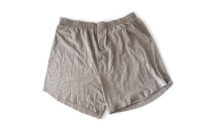The construction industry, like other industries, is continually evolving. Some accuse the construction industry of being stubborn, archaic and incapable of change. I disagree and feel there is proof that we are very responsive to change. We may be a bit stubborn and have some ingrained habits but we also respond to needs and prove clever innovation. Most complaints about a refusal to change are more related to a failure in sales or in comparing us to the auto industry. Constructing a building has so many more variations. Most of construction work requires trade workers that are able to think on their feet. Like all industries, we have occasional defects; ours is referred to as complex litigation. This is due to the various parts and contracts that need to work together and failures due to pressure that result from increased designs with low bid pricing.
Embracing Change
An example of an evolution is the desire for smoother drywall. Regardless of a level five or four finish, it is safe to say that smooth wall texture has replaced splatter or orange peel texture as the dominant texture across most markets with gypsum wallboard. The problem for smooth wall texture is that it hides nothing, in fact it will highlight even minor imperfections. This trend coincides with designers and building owners demanding higher quality at rock bottom pricing.
It seemed that when orange peel texture was the most popular finish, designers seemed to be slightly more tolerant of imperfections. Even on the occasion when the wall or ceiling work was specified as smooth wall they understood an up-charge in cost and that perfection could not be demanded. Over the decades, increased demands for perfection and increased pressure on pricing required changes in the industry. Designers got what they wanted and it may be accurate to say they got what they deserved, smoother walls for a lower price. While this sounds great, there is more to the story.
Lightweight & Heavyweight
Those in drywall finishing are very familiar with the terms lightweight and heavyweight mud. The first thing to know is that in the 1970’s, neither of those terms existed. This is because joint compound was joint compound. Light weight mud is a relatively new invention and was created for three reasons.
- The designers demands for perfection
- Better workability
- Lower shipping costs
It is hard to imagine anyone disagreeing with these three issues. It also explains why lightweight mud is now the king of muds. Lightweight joint compound is easier to sand, making it possible to get virtually perfect walls. This met the increased demands from the designers and owners. To reach the same level of perfection with the more traditional heavyweight mud required layer upon layer and repeated sanding between coats. This costs more money in labor, and there is equal pressure on lower pricing. Lightweight mud solved both problems. The lightweight mud had another benefit in lower pricing. These buckets or boxes reduced the cost of shipping, or at least slowed the inevitable increases.
This may seem too good to be true, and it is. Most things that have so many benefits, also have a few drawbacks. The most experienced drywall installers will tell you the muds today tend to be soft. In some cases, they can be ridiculously soft. I had a drywall contractor once tell me not to look too hard at the walls, as I might dent them. We have all been to commercial sites and seen the thousands of dimples, nicks or gouges in the painted wallboard in the more abuse prone areas of the wall. In many cases, the toughest part of the wall is now the paint coating.
Trade-offs
While some might blame manufacturers or contractors for lightweight mud, they are simply responding to a need and desire by others—higher quality smooth wall texture and a lower price. There is no other way to get it without the innovation of lightweight muds.
I wonder if designers and owners will soon want self-healing muds? These would be products that when dinged will repair themselves. I would not be shocked to learn the manufacturers are already working on this.
So, while others call us dinosaurs and too stubborn to change, ask them if they can explain the pros and cons of joint compounds. I think the construction industry could be guilty of one thing, giving consumers what they asked for and possibly not adequately explaining that there will be trade-offs. W&C





Report Abusive Comment